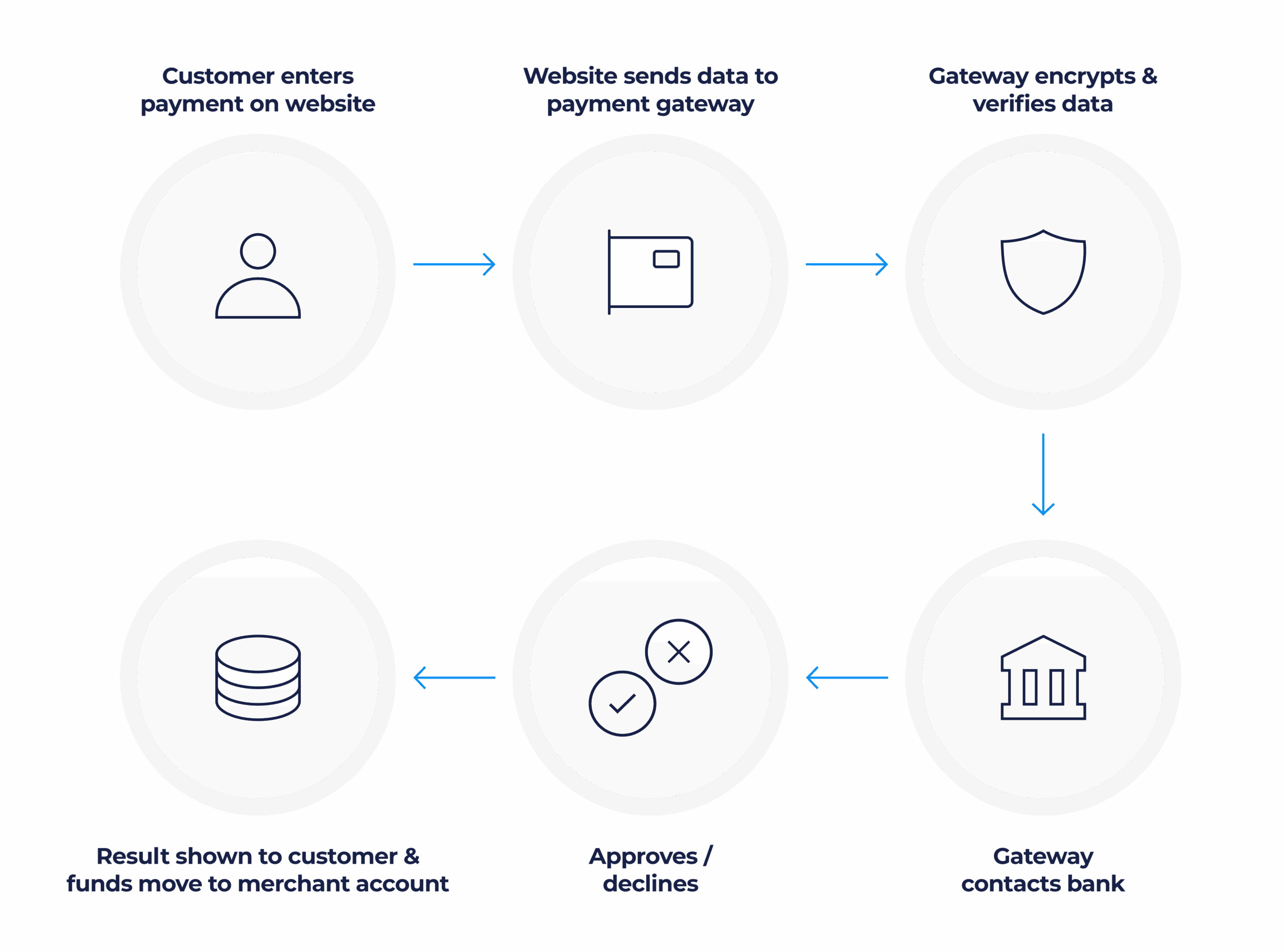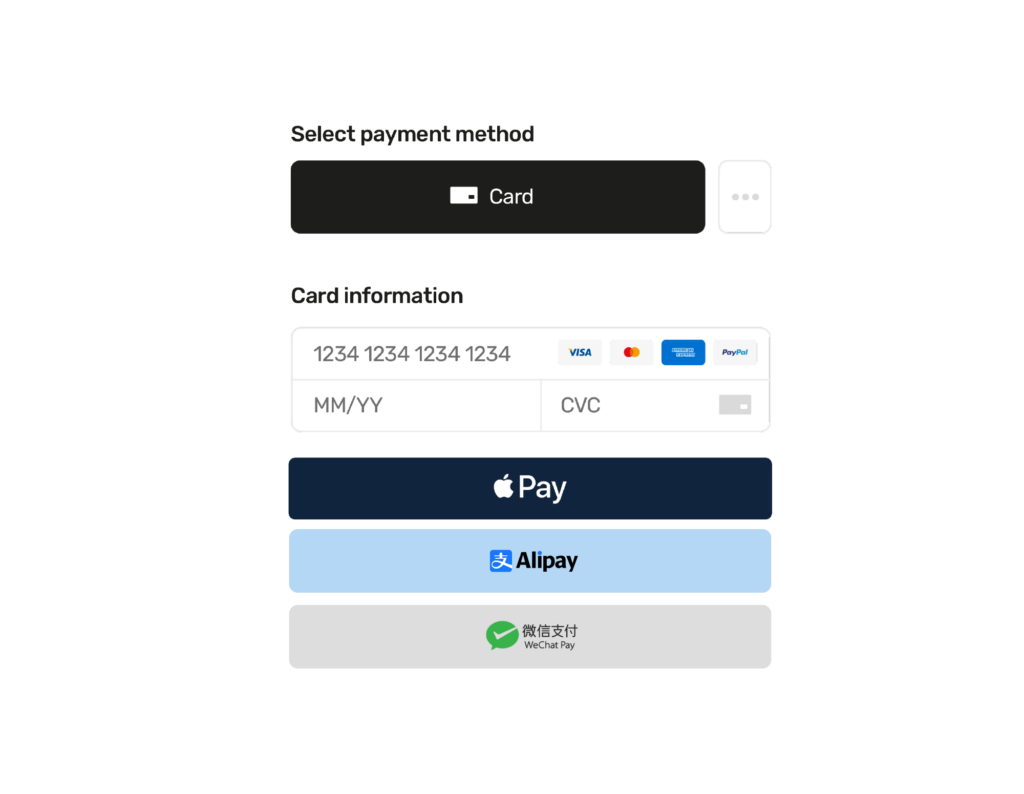
If you’re looking to start accepting payments online, getting a payment gateway for your website is an essential part of this process. Without it, you simply won’t be able to take card payments or process transactions securely.
That’s where our back-to-basics payment gateway explained blog comes in. We’re here to walk you through what a payment gateway is, how a payment gateway works and everything you need to know about the payment gateway process. Whether you’re launching an e-commerce site or upgrading your current setup, understanding this essential tool is key to getting paid online quickly and safely.
So, without further ado, here’s our guide to tell you everything you need to know.
What’s in this article?
A payment gateway is the foundation of your online payment process. It acts as the secure bridge between your website and the financial networks involved in the transaction. When a customer enters their card details on your secure checkout page, the gateway takes the lead in communicating between your site and any financial institutions involved.
It predominantly acts as a liaison, verifying payment details with the bank or card network to safeguard your business from fraudulent activities and costly chargebacks. The gateway automatically accepts or declines payments based on factors such as whether or not funds are available or if the customer has entered the card details correctly.
On top of that, an online payment gateway automatically encrypts your customer’s card details, making sure you’re meeting the required standards in customer data protection. Without a payment gateway for your website, you can’t securely accept card payments online, making it a non-negotiable for any e-commerce business.
While they’re often bundled together, a payment gateway and a merchant account serve different purposes within the payment process, so you’ll need both to take payments online. The payment gateway collects and transmits payment data securely, while the merchant account temporarily holds funds before they’re transferred to your business bank account.
Many providers (including us) offer both as part of an all-in-one online payment solution. By integrating all processing tasks, this can help with settlement speed, fees and reporting.
Find out more about how they differ in our payment gateway vs merchant account blog.
As we’ve mentioned, the payment gateway essentially acts as a middleman between merchants and customers, transmitting the information and encrypting sensitive customer data.
To better understand how a payment gateway works, it helps to look at the online payment gateway process step-by-step:
1. Payment page
The payment process begins with the checkout page; the place where the customer enters their card details. These details are then sent from your website to your payment gateway.
2. Authentication
The payment gateway receives the details, including transaction amount, currency, cardholder name, address, order number and other transactional information.
The payment gateway then checks the basics via the card networks or payment provider – is the card active? Is the merchant allowed to accept payments from the cardholder’s country? As soon as the gateway gets the go-ahead, it will contact the customer’s bank to confirm the details are correct and the customer has enough funds.

3. Payment accepted or declined
The bank sends a response to the gateway’s query. The payment gateway interprets it and instantly notifies both the customer and the merchant whether the payment was successful or not.
4. Transaction complete
If accepted, the funds will be transferred to your merchant account where they will sit for the agreed holding period, before being deposited into your business bank account.
This entire payment gateway process happens in a matter of seconds, creating a seamless and secure experience for both you and your customer.
When choosing a payment gateway for your website, you will need to consider your business model and goals to work out which one is right for you. For example, what you need for a gateway for an e-commerce website may differ for those needing a gateway for a Forex website. Here are a few things to think about.
Every business has different needs, so costs will vary, particularly due to your business model. For example, those in high-risk industries will usually have to pay more due to the increased risk of chargebacks and fraudulent activity. Other factors include the size of your business, the price of the items you sell and whether you sell internationally.
All businesses can expect to pay a setup fee, transactional fees and a monthly fee for payment gateway services. Beware of chargebacks, as these can also incur an additional fee. However, the best payment gateways will guard against risky transactions that could result in these disputes, which is why you should choose a quality solution that is equipped with high-level fraud prevention technology.
Security is non-negotiable. A good website payment gateway must be PCI DSS compliant and equipped with strong encryption to protect cardholder data. There are several levels of PCI compliance, depending on your business model and the number of payments you process in a year. For high-risk merchants, such as those looking for a CBD payment gateway, increased safety authentication is invaluable.
Failing to meet compliance can result in hefty fines and reputational damage. Therefore, choosing a secure payment gateway with a high level of encryption will help to keep customer data safe.
When looking at the security of your payment, fraud prevention is a big part of that. Online payments are widely susceptible to credit card fraud, including card-not-present fraud, fraudulent chargebacks and cyberattacks, which can incur huge costs to businesses globally.
E-commerce sites are particularly vulnerable to fraud. There’s been a rise in ‘digital shoplifting’, where customers order an item, have it delivered and then use a chargeback to recover the money they’ve spent – often by claiming the item never arrived. In fact, in 2022, 23% of consumers admitted to unnecessarily disputing purchases!
With this in mind, your payment gateway needs to come equipped with a fraud protection suite to give you extra security against this growing problem. Look for features such as:
Planning to sell globally? Choose an international payment gateway that supports multiple currencies, payment methods and languages to meet consumers’ needs all over the world. Being able to integrate with local acquirers is a huge plus to increase success rates and settlement speed.

Modern customers expect a variety of ways to pay. So to offer your customers the best possible experience, you can’t just accept major cards (Visa, Mastercard, AmEx) these days. Your payment gateway should support a range of online payment methods, including digital wallets like PayPal, Apple Pay and Google Pay, to reduce cart abandonment.
Real-time transaction updates are detrimental to helping you stay on top of your business. That’s why enhanced reporting is an invaluable tool, allowing you to monitor revenue, check profit margins and even forecast sales. This will not only help you to plan your business’s growth and ensure you’re meeting targets, but will also make accounting far more streamlined and easy to track.
Things can go wrong – make sure your provider offers responsive and knowledgeable support so any issues are resolved quickly, without disrupting your cash flow.
For more details and additional tips, check out our blog on things to consider when choosing a payment gateway or learn more about the challenges a global payment gateway may face so you know how to overcome them.
Ultimately, you want a payment gateway that’s secure, cost-effective and tailored to your business model. It should integrate easily with your website, protect your transactions and provide the flexibility to scale as you grow.
At Nomupay, we offer everything you need to get started – from the payment gateway itself, to the merchant account, fraud prevention tools and full payment gateway integration support.
Why not take a look at what our payment gateway has to offer or get in touch with us today to learn more and get a quote.